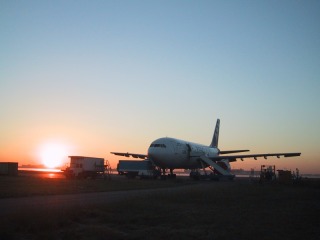
(Enlarge...)
|
The Airbus A300 Zero-G at its base airport at Bordeaux-Mérignac.
Before the flights the plane is available for three days for mounting
and testing of the experiments.
The parabolic flight campaigns are managed by the company Novespace
( www.novespace.fr). www.novespace.fr).
|
|
The experiment area inside the A300 provides space for ca 10 scientific
experiments at one campaign.
During take-off and landing the scientists are seated in front of and
behind the experiment area.
|
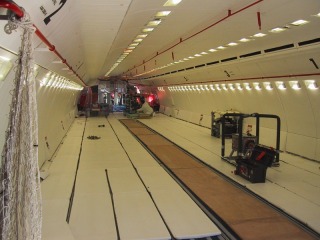
(Enlarge...)
|
|
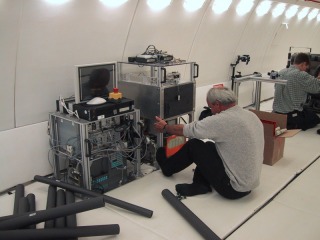
(Enlarge...)
|
Installation of the plasma crystal apparatus inside the Airbus.
Left side: Rack with control computer, electronics and data
acquisition computer.
Right side: Digital video recorder, plasma chamber (enclosed due
to safety reasons), gas supply system (Argon) and vacuum pump.
The foam tubes serve as a cushion for the edges of the set-up to
prevent from injuries during flight.
|
|
Last fine tuning of the oscillators (copper coils) for matching
the high frequency generator output to the electrodes inside
the chamber.
|

(Enlarge...)
|
|
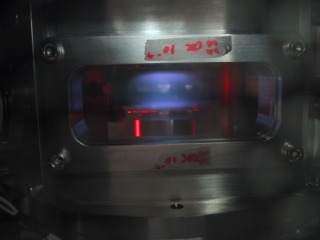
(Enlarge...)
|
View into the plasma chamber. The high frequency discharge between
the electrodes (top and bottom) is ignited, the plasma 'burns'
(violet glow). The chamber is filled with Argon gas with a
pressure of 0.3 mbar. Also the Laser for the illumination of
the particles works well (red reflections).
|
|
Installation is finished. Everything is fixed (not to float
away in weightlessness) and the edges are cushioned (not to
hurt floating crew members). The plasma crystal set-up is ready
for the up-coming safety inspection.
|
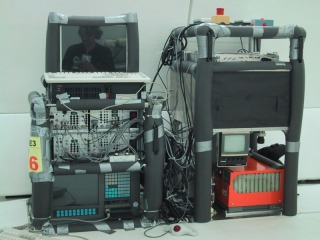
(Enlarge...)
|
|
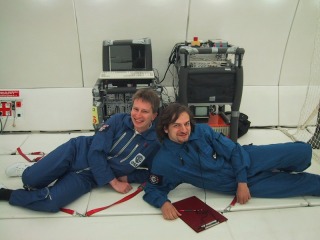
(Enlarge...)
|
The crew of flight day #1: Roland Seurig (Kayser-Threde),
Uwe Konopka (MPE) and Karl Tarantik (MPE, not imaged) in front
of the apparatus ready to fly.
The red straps keep the crew in place to conduct the experiment
in weightlessness.
|
|

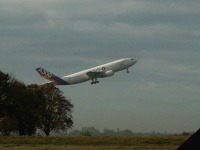
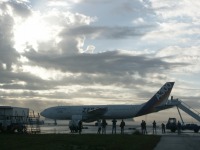
Up, up and away!
|
|
|
Plasma crystal crew on flight day #2: Karl Tarantik, Michael
Kretschmer, Uwe Konopka (all MPE staff).
|
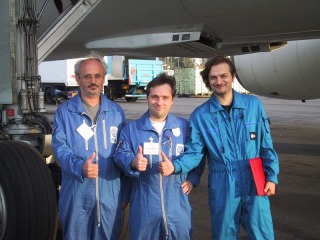
(Enlarge...)
|
|
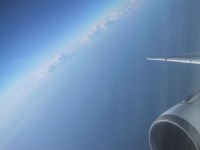
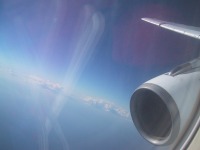

In the parabola
|
|
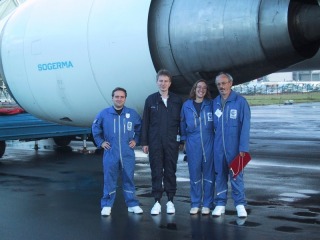
(Enlarge...)
|
The extended crew on flight day #3: Michael Kretschmer, Roland Seurig,
Roberta Castegini (Kayser-Threde) and Karl Tarantik below the A300 Zero-G.
|
|



Floating scientists and micro-particles
|
|
Coming home after 90 parabolas with lots of data that now
need to be analyzed...
|
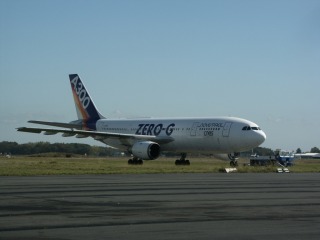
(Enlarge...)
|
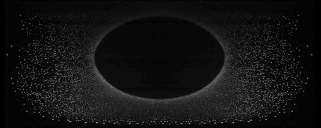
Some data and results...
|